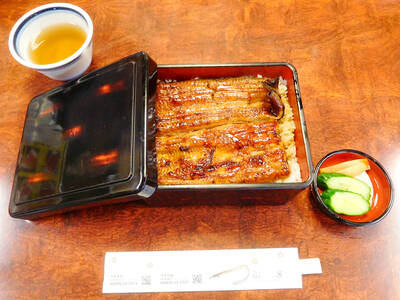對話 Dialogue
馬克:小實,這是我的履歷表,你可以幫我看看嗎?
Make: Xiǎoshí, zhè shì wǒ de lǚlì biǎo, nǐ kěyǐ bāng wǒ kànkàn ma?

小實:哇,你要在臺灣找工作嗎?
Xiaoshi: Wa, nǐ yào zài Táiwān zhǎo gōngzuò ma?
馬克:對啊!我想到臺灣的公司去實習,增加一些工作經驗。
Make: Duì a! Wǒ xiǎngdào Táiwān de gōngsī qù shíxí, zēngjiā yìxiē gōngzuò jīngyàn.
小實:喔!只要清楚的寫出你的學歷和專業能力,用哪種格式都沒問題。
Xiaoshi: Ō! Zhǐyào qīngchǔ de xiě chū nǐ de xuélì hàn zhuānyè nénglì, yòng nǎzhǒng géshì dōu méi wèntí.
馬克:不過,這裡為什麼要寫兩個地址?
Make: Búguò, zhèlǐ wèishénme yào xiě liǎng ge dìzhǐ?
小實:喔,這個「戶籍地址」是我們身分證上的地址。
Xiaoshi: Ō, zhèige “hùjí dìzhǐ” shì wǒmen shēnfènzhèng shàng de dìzhǐ.
馬克:我現在寫的就是我居留證上面的地址。
Make: Wǒ xiànzài xiě de jiùshì wǒ jūliúzhèng shàngmiàn de dìzhǐ.
小實:對,如果你現在不住在這裡,才需要再寫通訊地址喔!
Xiaoshi: Duì, rúguǒ nǐ xiànzài bú zhù zài zhèlǐ, cái xūyào zài xiě tōngxùn dìzhǐ ō!
英文翻譯 Translation
Mark: Xiaoshi, here is my resume, could you take a look at it for me?
Xiaoshi: Wow, are you looking for a job in Taiwan?
Mark: Yes! I want to do an internship in a company in Taiwan to gain some work experience.
Xiaoshi: Oh! It doesn’t matter which format you use, as long as you clearly state your educational background and professional skills.
Mark: But why does it need two addresses here?
Xiaoshi: Oh, this one is the “household address,” it’s the address written on the ID card.
Mark: I am writing the address on my residence card.
Xiaoshi: Yes, if you don’t live here at the moment, you just need to write down your correspondence address.
單字片語 Vocabulary
1. 履歷表 (lǚlì biǎo) resume, CV
2. 實習 (shíxí) internship
3. 工作經驗 (gōngzuò jīngyàn) work experience
4. 學歷 (xuélì) educational background, academic qualifications
5. 專業能力 (zhuānyè nénglìǐ) professional ability
6. 格式 (géshì) format
7. 戶籍地址 (hùjí dìzhǐ) household address, residence address
8. 身分證 (shēnfèn zhèng) identity card
9. 通訊地址(tōngxùn dìzhǐ) correspondence address
教材音檔 Audio Files
教材影片 Video Files:
https://www.instagram.com/celc.nou_tw/guide/_/17999106352646292/
實踐大學華語中心提供
By Shih Chien University Chinese Language Center: https://chineseusc.com/

Microsoft on Feb. 28 announced it was retiring Skype, the online voice and video call pioneer that the tech titan acquired in 2011. “Starting in May 2025, Skype will no longer be available,” said a post from Skype support on X, directing users to sign into Microsoft’s Teams platform for further use of its services. Skype was founded in 2003 by Scandinavians Niklas Zennstrom and Janus Friis in Estonia, revolutionizing Internet communication by offering free voice calls between computers and affordable rates for calls to landlines and mobile phones. Over the years, and as Internet speeds improved, Skype evolved to

People desire a sense of purpose in their lives, but they often remain idle unless they have a clear reason to act. This concept is illustrated by the retirement paradox. People work hard to prepare for a future without work but find life meaningless after achieving that goal. A study was carried out to determine if a reason, even a minor one, could encourage idle people to take action. __1__ Upon finishing the first, they were instructed to drop it off at a location either right outside the room or at a spot farther away, which would take around

Donburi, often simply called don, is a beloved Japanese dish that consists of a bowl of steamed rice topped with various other ingredients. The word donburi itself actually means “bowl” in Japanese, but it has come to represent much more than just a vessel. Donburi first emerged during the Edo period (1603–1867) as a quick and convenient meal for busy city dwellers. By the 19th century, donburi had become immensely popular among theater enthusiasts, who often purchased these portable meals to enjoy during long performances. Una-don, a donburi topped with grilled eel, was a particular favorite. Easy-to-carry and satisfying,

Continued from yesterday(延續自昨日) https://www.taipeitimes.com/News/lang Results showed that only 32 percent were willing to walk farther for the same candy, but 59 percent chose to do so when promised different candy. Researchers also discovered that students who walked farther reported feeling happier during the wait. __3__ Idleness aversion can be applied in various settings. For example, Uber uses animations and real-time updates to keep customers from being bored while waiting. It can also be used in the design of office buildings to reduce elevator traffic. During busy times, it takes a while to wait for an elevator. __4__ Recognizing the power